 |
| Karst Stone Paper Pocket Journal |
I don’t go out of my way to sketch in the rain, but when it’s drizzly, my only reward to go out fitness walking is that I might be able to sketch. That’s when I grab my Field Notes Expedition (see my review), which contains Yupo, a waterproof paper. A “synthetic paper” made of polypropylene, it feels just like plastic – toothless, tear-proof and nearly indestructible by normal means.
I kept hearing about another line of notebooks containing waterproof, tearproof paper: Karst Stone Paper. Claiming to be made of “100% sustainably recycled stone,” the paper piqued my curiosity, and I picked up an A6-size pocket journal. Information on the bellyband goes on to say that the paper, made without trees, bleaches or acids, is produced with a 60 percent lower carbon footprint.
Right off the bat, I like the size and format better than Expedition (which is Field Notes’ standard 3 ½ by 5 ½ inches): A6 (105 x 148mm) offers just a bit more page real estate but still fits in my bag pocket.
Also right off the bat, I detected an unpleasant smell to the paper – synthetic-y, plasticky or chemical-y. How’s that for articulate? I can’t describe it, but I don’t like it.
The matte covers are pleasantly smooth without feeling plasticky (which is how the Expedition feels, inside and out). The only branding on the front is a small logo in the corner. The sewn binding allows the pages to open completely flat. I can also easily fold back the side I’m not using while sketching. The latter two are both important features to me.
The Karst's A6 size is a smidge larger than Field Notes Expedition. Information on the bellyband about environmentally friendly stone paper.
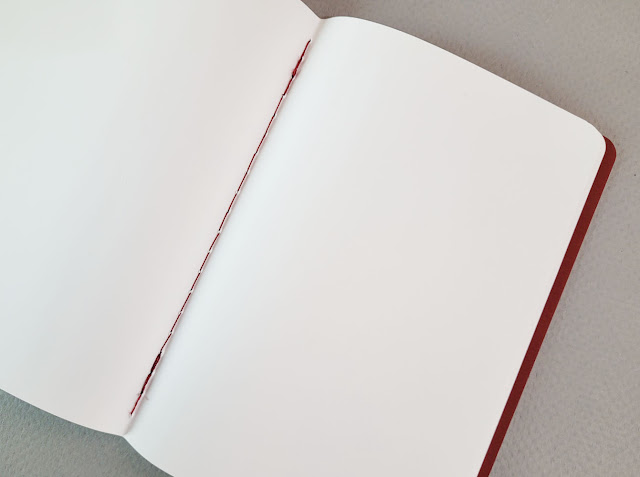 |
| Red thread used for stitched binding. |
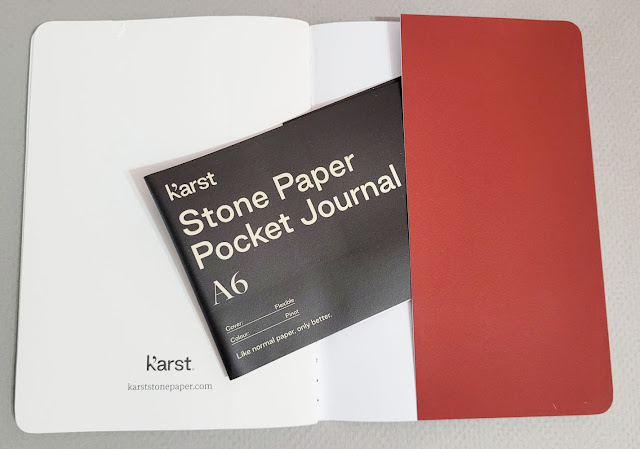 |
| On the inside back cover is a pocket for storing ephemera. |
Although it was not my intention to do a head-to-head comparison between Expedition and Karst, I thought it was important to at least compare the papers in how various media react to them. In general, the media I tested reacted about the same on both paper types. All wet media stay wet much longer than on most papers, so they are prone to smearing (especially for this lefty).
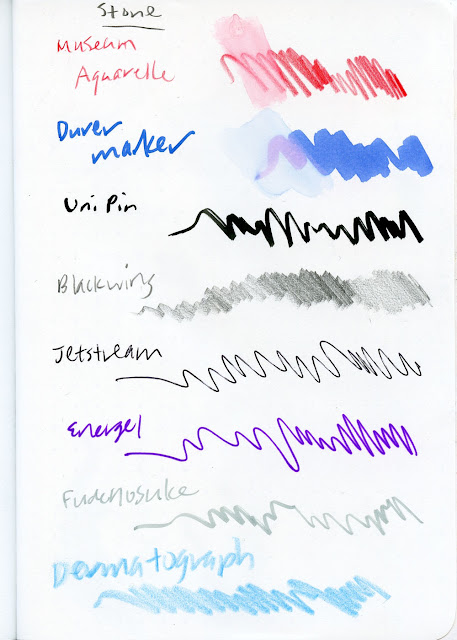 |
| Scribble tests on Karst stone paper |
 |
| Same media on Expedition. I nearly obliterated the word "Energel" when I inadvertently touched it before the ink had dried, which took a long time. |
When I tested the soft Blackwing graphite pencil, I was surprised to see that the Karst paper has a tiny bit of texture, because I certainly can’t feel it as I scribble (it offers “friction-free writing,” says Karst’s marketing copy). When I run my hand on it, though, the Karst does feel more like a matte finish, while Expedition feels more glossy – even less friction than “friction-free.”
Shown below are the reverse sides of the Expedition and Karst scribble test pages. The Expedition is completely opaque, while the Karst has faint ghosting. Of course, neither shows any bleed-through; I don’t think either paper is capable of absorption.
Reverse side of Expedition Reverse side of Karst
The challenge with either of these papers is finding an acceptable medium to draw with. As you can see, many (though not all) pens will work, but some inks will take so long to dry that smearing is inevitable (probably even for righties). And yes, both papers are completely waterproof, but what’s the point of waterproof paper if you can’t write or draw on it while the page is wet? There’s the rub: The only things I’ve tried that work on a wet page of either Expedition or Karst are graphite and colored pencils – the softer, the better. In the test below, I spritzed a Karst page with water, then immediately tried to scribble with a ballpoint pen and a graphite pencil. The pen stopped writing immediately, but the pencil was fine. (This is exactly the same as what happens with Expedition.)
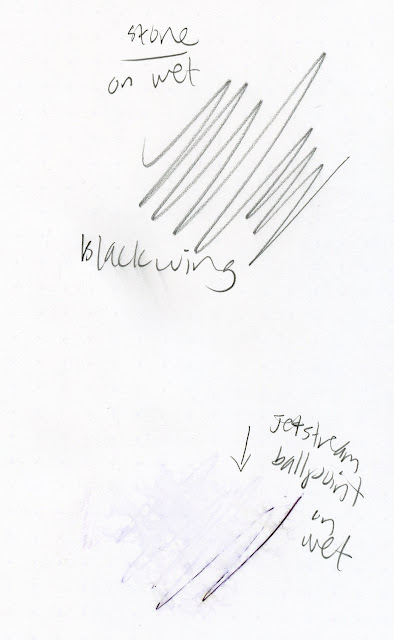 |
| Soft graphite is the only medium I tried that will work when stone paper is wet. |
I’ve been using Expedition for a few years now, and soft graphite is my favorite to use in it. There’s never doubt about whether it will work, and I can count on it to work even if the page is wet. That’s also the case with Karst – I like the way soft graphite feels on it. Graphite does smudge a bit (see the word “Blackwing” above, which I smudged after the page was dry), but no worse than on regular paper.
Instead of frowning the next time it was drizzly, I gleefully took the Karst notebook with me on my walk. You can’t see it in my sketch photo, but the page was misted with rain as I sketched. The cover also withstood moisture nicely (a few drops visible in that photo). When the page and cover dried completely, they showed no trace of ever having been wet. The Karst stone paper notebook makes a fine rainy-day sketchbook.
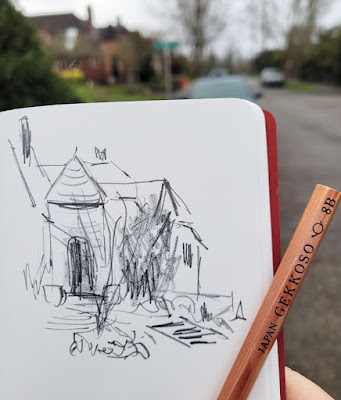 |
| 1/20/22 Gekkoso 8B graphite in Karst Stone Paper journal |
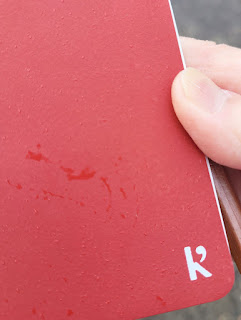 |
| Drizzly cover |
This is not the last time I’ll be talking about this Karst stone notebook, however, because I have another review coming up: a set of colored pencils that was ostensibly “designed specifically for use with Karst paper”! Stay tuned.


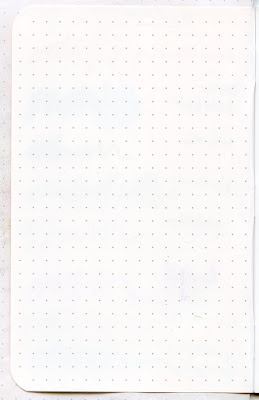
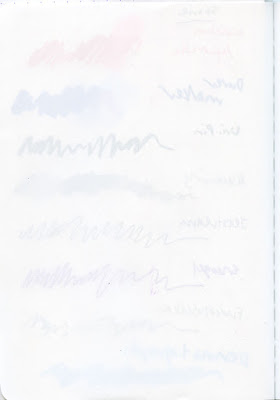
Good review. I think the smell would bother me too. Unlike you I don't usually sketch out in the rain...I hide in my mobile studio.
ReplyDeleteWhaaaat... you don't like to get wet? ;-)
Deletei wish i knew how they made it. im super curious...
ReplyDeleteHere's a Wikipedia article on the process: https://en.wikipedia.org/wiki/Stone_paper?fbclid=IwAR2nmf2Wml-lDZLU-twDpv97-l87drtIymLDuqKXEprh1Oc7I-XLtirTqCA
DeleteIs there any chance the smell might wear off with time or perhaps after exposure to sunshine & fresh air? Did the company have any suggestions? Surely some company employees have used the products long enough to have come up with a fix?
ReplyDeletePossibly, but I didn't pursue any of those options -- I'm just going to continue using the Expedition for now. I suppose the good news is that I could hang it out to dry, and it won't be harmed by the elements! ;-)
DeleteI wish I would have read and reread your review before buying Karst. You are 100% correct. The smell was awful, and the texture of the paper (plastic) was off-putting. I'm sticking with real paper.
ReplyDeleteIf you need something waterproof, Field Notes Expedition is worth trying! No smell at all!
DeleteSo fucking weird, I was given this notebook and m
ReplyDeletesketching furniture designs and it grabs my lead. It feel like a ouija board out of my control with a sharp lead. I kinda like that feeling but this "paper" is ass. Is ass good or bad?. Depends who you ask.